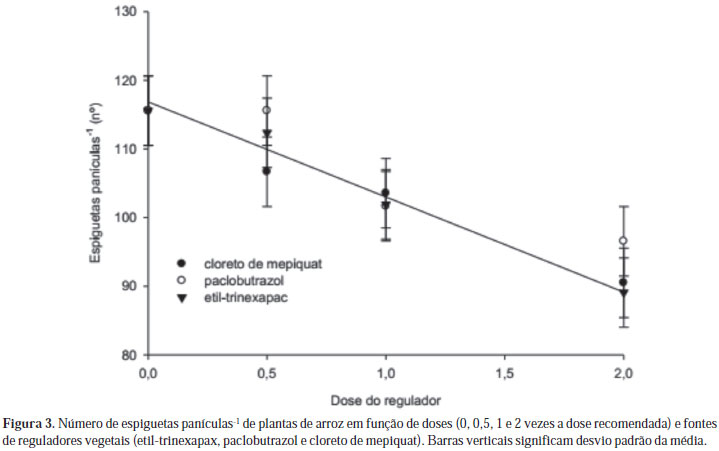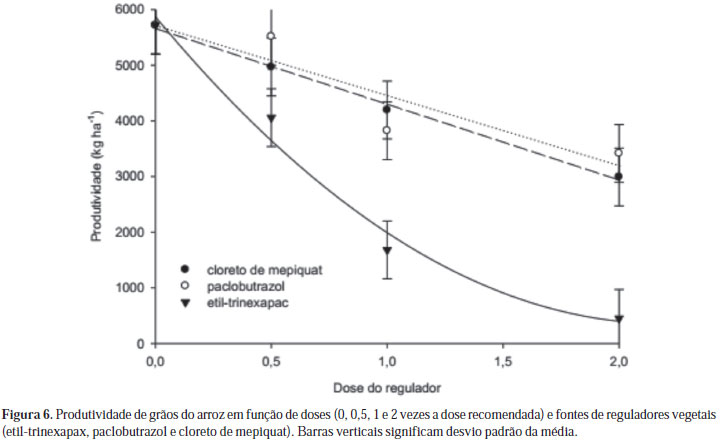The use of sprinkler-irrigation and/or high levels of fertilization in upland rice can increase plant height and hence plant lodging. Lodging can be controlled by using growth regulators, in order to reduce plant height. The objective of this study was to evaluate the efficiency of plant growth regulators applied at the stage of panicle primordium differentiation on the reduction of plant height and the impact on grain yield and its components of upland rice cultivar Primavera, under sprinkler irrigation. The experiment was arranged in a 3x4 factorial randomized blocks design with four replications. Treatments consisted of: mepiquat chloride and trinexapac-ethil applied at doses 9, 50, 100, and 200 mg a.i. ha-1, and paclobutrazol at doses of 0, 25, 50, and 100 mg a.i. ha-1. Plant growth regulators reduced rice plant height; increasing doses of regulators reduced upland rice grain yield and its components; trinexapac-ethyl was the most harmful to rice grain yield.In this study, it was not identified the dose of growth regulator that allied reduction in plant height and did not cause decrease in rice yield.
Oryza sativa L.; lodging; mepiquat chloride; ethyl-trinexapc; paclobutrazol








